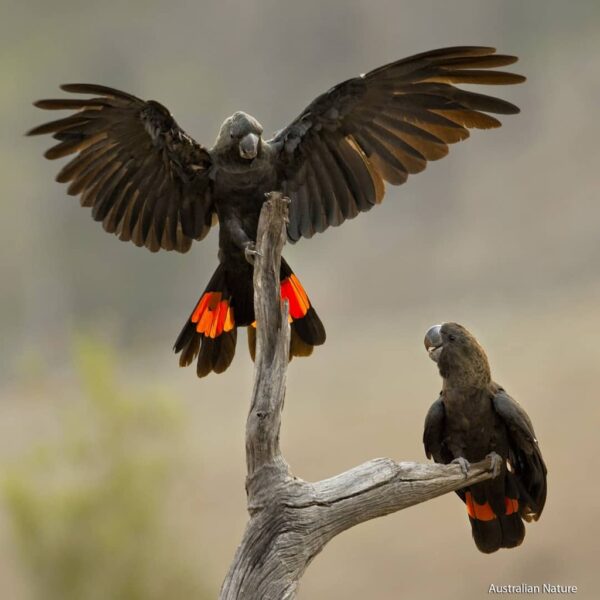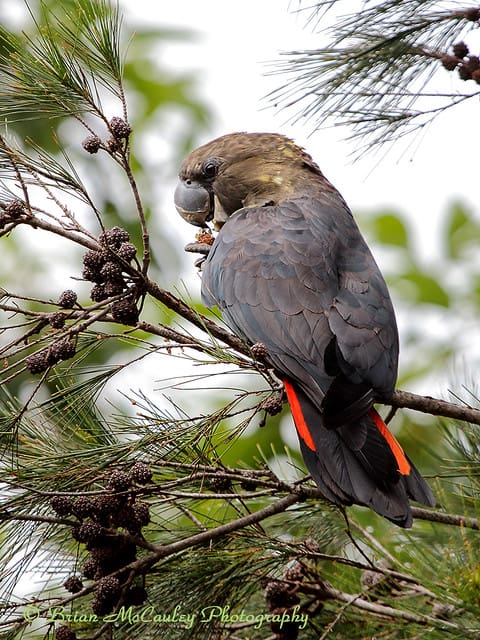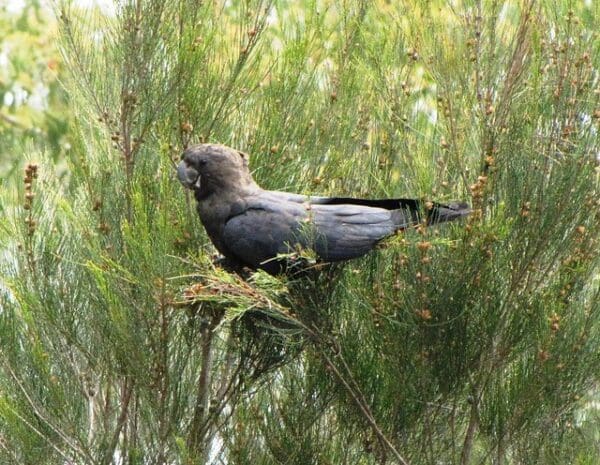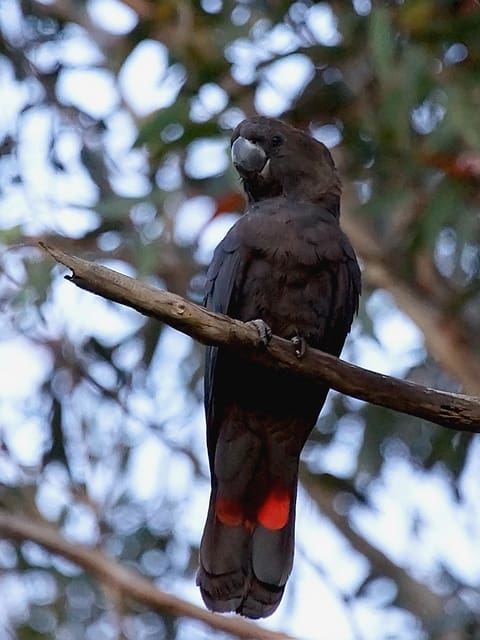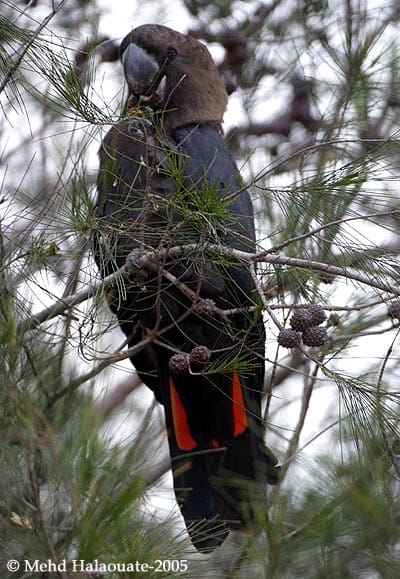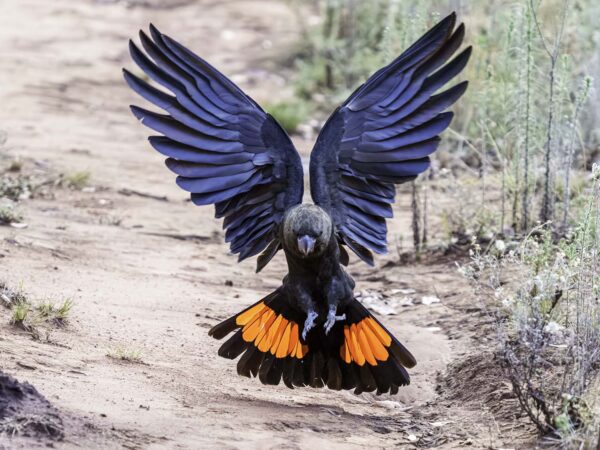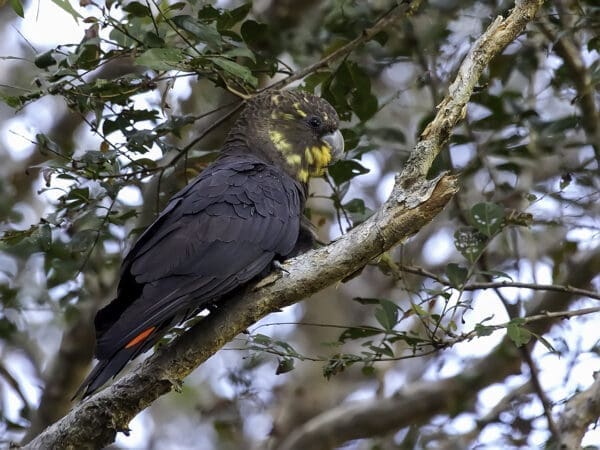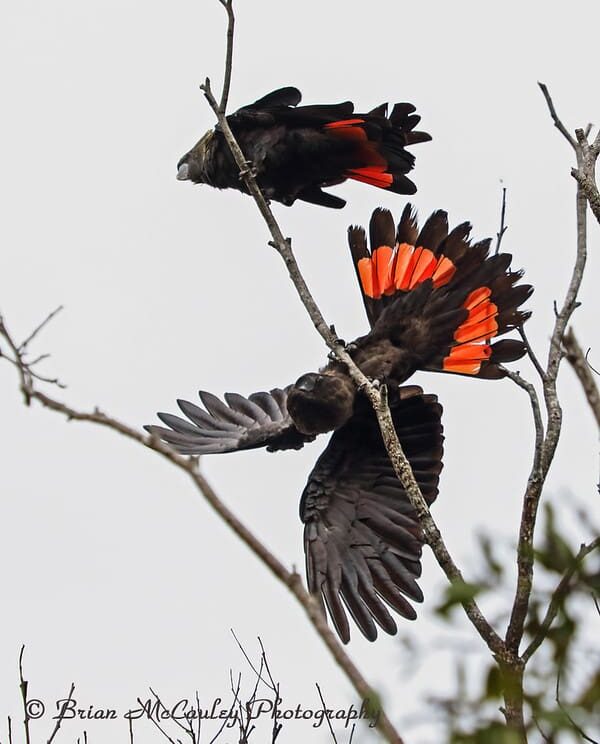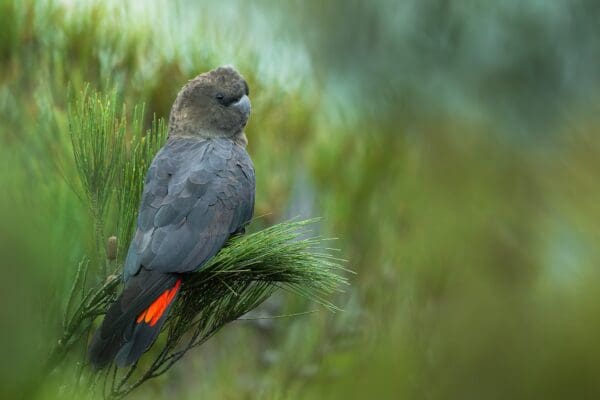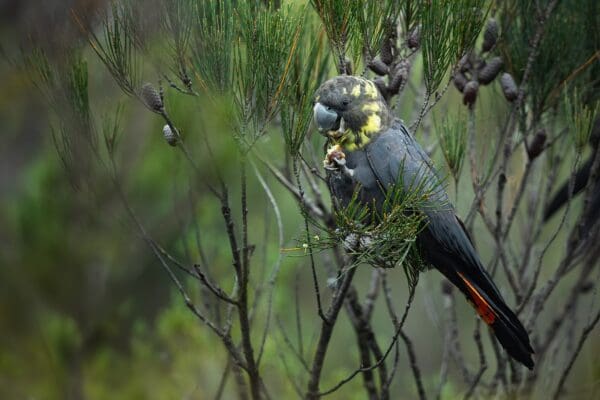Glossy Black Cockatoo
Also known as:
Glossy Cockatoo, Leach's Black Cockatoo, Leach's Red-tailed Cockatoo, Latham's Cockatoo, Casuarina Cockatoo
Also known as:
Glossy Cockatoo, Leach's Black Cockatoo, Leach's Red-tailed Cockatoo, Latham's Cockatoo, Casuarina Cockatoo
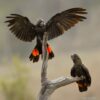
![© Brian McCauley | [CC BY-SA 2.0] A wild Glossy Black Cockatoo feeds on cones](https://parrots.org/wp-content/uploads/2023/01/wpt_Glossy-Black-Cockatoo_1436-12-100x100.jpg)
![© Phil Spark [CC BY-SA 2.0] via Flickr A Glossy Black Cockatoo climbs about in a tree](https://parrots.org/wp-content/uploads/2023/01/wpt_Glossy-Black-Cockatoo_1436-9-100x100.jpg)
![© David Cook [CC BY-SA 2.0] via Flickr A wild male Glossy Black Cockatoo perches on a branch](https://parrots.org/wp-content/uploads/2023/01/wpt_Glossy-Black-Cockatoo_1436-6-100x100.jpg)
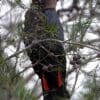
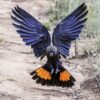
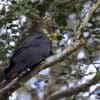
![© Brian McCauley [CC BY-SA 2.0] via Flickr Wild Glossy Black Cockatoos display](https://parrots.org/wp-content/uploads/2023/01/wpt_Glossy-Black-Cockatoo_1436-13-e1731695078774-100x100.jpg)
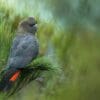
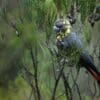
DID YOU KNOW?
The wild Glossy Black Cockatoo population has declined by over 30% over the last few decades.

Calyptorhynchus

lathami
Size:
48 cm (18.7 in)
Weight:
400-500 g (14-17.5 oz)
Subspecies including nominate:
three: C.l. lathami, C.l. halmaturinus, C.l. erebus
Colour Adult:
C.l. lathami: Male-head, neck and underparts red/brown; back and wings black; centre tail feathers black, side tail feathers with red band near end. Beak grey. Eye dark brown. Female-yellow feathers on head and neck; red tail band suffused with yellow and bisected by narrow black bars. Beak grey/horn-coloured.
C.l. halmaturinus: Both adults similar to lathami but beak larger.
C.l. erebus: Both adults like lathami but beak smaller.
Colour Juvenile:
C.l. lathami: Sides of head spotted yellow and some yellow spots on upper and under wing coverts, mainly darker yellow in subadult males; lower underparts barred with soft yellow, more evident in subadult females; tail band like that of adult female, but darker red in subadult males. Beak horn-coloured washed with grey at base.
C.l. halmaturinus: Like lathami, but beak larger.
C.l. erebus: Like lathami, but beak smaller.
Call:
Call soft wailing or wheezing sound. Gutteral alarm call. Female soliciting food from male gives squeaking sound.
Content Sources:
CITES
BirdLife International
Cornell Lab of Ornithology/Birds of the World
Parrots: A Guide to Parrots of the World, Juniper and Parr, 1998
Parrots: Status Survey and Conservation Plan 2000-2004, Snyder, McGowan, Gilardi and Grajal, 2000.
Parrots of the World, Forshaw and Cooper, 1977. 2010 edition
Parrots of the World, Forshaw, 2006.
Parrots in Aviculture, Low, 1992.
Guide to Incubation and Handraising Parrots, Digney, 1998.
Captive Status:
Uncommon.
Longevity:
20 or more yrs.
Housing:
Walk-in enclosure, minimum length 4.5 m (14.7 ft).
Diet:
Casuarina seeds, if available; nuts including: walnuts, almonds and pine nuts; sunflower seed, wheat, maize and fresh corn; green leaves like lettuce and Swiss chard if taken; oranges may be offered. Complete kibble.
Enrichment:
Chewables, such as bird-safe wood (fir, pine, bamboo), wood block toys, vegetable tanned leather toys and heat sterilized pine cones.
Nest Box Size:
Nest log
Clutch Size:
1
Fledging Age:
3 months
Hatch Weight:
—
Peak Weight:
—
Weaning Weight:
—
World Population:
7000-14,000 mature individuals, decreasing.
IUCN Red List Status:
Vulnerable
CITES Listing:
Appendix II
Threat Summary:
There has been a rapid population decline in the last three generations (35.7 years) that is likely to continue. The overall decline is estimated to be over 30% and is due to loss of forest habitat and increasingly severe bush fires. The 2019-2020 fire season likely exacerbated this. Climate change and resultant severe heat waves are projected to further affect populations. Shortages of nesting hollows will increase competition from other cavity-nesting animals. There is an emerging risk of Psittacine Beak and Feather Disease spread from other cockatoo species.
Range:
C.l. lathami: E Australia from lat. 26S in SW Queensland south to E Victoria.
C.l. halmaturinus: Restricted to Kangaroo Island, S Australia. Formerly in Mount Lofty.
C.l. erebus: CE Queensland, in Dawson-Mackenzie-Isaac Rivers basin, and possibly west of Paluma Range in NE Queensland.
Habitat:
Found around Casuarina or Allocasuarina trees. Also prefers Eucalyptus woodland in high ranges. Occurs in riverine woodland, dense forest, semi-arid woods, coastal forest, wet and dry sclerophyll forest and brigalow scrub.
Wild Diet:
Specializes on Casuarina and Allocasuarina (A. verticillata, A. littoralis, A. torulosa), taking the cones from each. Also noted taking fruit, wood-boring grubs, sunflower Helianthus seeds, Acacia, Banksia and Eucalypt seeds.
Ecology and Behaviour:
Resident, but may move locally after breeding. Found in small, quiet groups of up to 20 birds but usually in smaller parties of 2 to 10. Often found in groups of two adults and one immature. Will congregate to feed. Not found in large flocks in open areas. Pair bond is strong.
Clutch and Egg Size:
1 ovate egg, 44.5 x 33.5 mm (1.7 x 1.3 in).
Breeding Season:
March-August; nest is a bed of wood-chips in a tree hollow.
